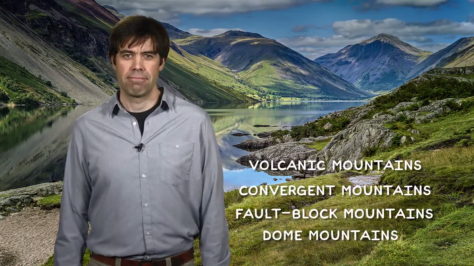Hi everyone,
I’m working my way through an excellent free course on the coursera website, “Mountains 101” from the University of Alberta. It’s an interdisciplinary MOOC delving into the history, geology, ecology and even the cultural significance of mountains. Here are the key facts:
Mountains 101
Time requirement: 12 weeks of study, 3 – 5 hours/week
Language: English
User Ratings: Average User Rating 4.7
Cost: Free, with the option to pay for a certificate (45.00 EUR according to mooc-list.com)

I’ve been enjoying lessons 7 and 8. “Lesson 7: Imagination” discussed early and modern attitudes towards mountains, with modern enthusiasm for mountains in the West fuelled by Romantic notions of the sublime (from notable persons such as Wordsworth and John Muir).
“Lesson 8: Hazards” has been a nice contrast to the cultural viewpoint of lesson 7, moving back into natural sciences territory to look at avalanches, landslides and volcanoes! I’m looking forward to the next lessons, covering mountain plants and animals.
Here is an overview of all the topics covered in the course:
- Lesson 1: Why Mountains Matter
- Lesson 2: Origins
- Lesson 3: Climate
- Lesson 4: Bodies at Altitude
- Lesson 5: Water Towers
- Lesson 6: Glaciers
- Lesson 7: Imagination
- Lesson 8: Hazards
- Lesson 9: Mountain Biodiversity and Adaptations of Plants
- Lesson 10: Animal Adaptations
- Lesson 11: Use and Preservation
- Lesson 12: Future Mountains
The latest intake for this course started yesterday (Mar 6th 2017) – you can join now and catch up, or keep an eye out for the next intake! (Head to the course)
To finish off, I’d like to share a 5th century Chinese poem about mountain landscapes that was featured in the course:
In the mountains, all is pure, all is calm, all complication is cut off.
Rare are they who know to listen, happy they who possess wisdom.If the cold wind stings and bothers you, sit in the sun, it is always warm there. Its hot rays burn like flames, while, opposite, in the shade, all is frost and snow.
One pauses on ledges, one climbs to the foot of high clouds. One sits in the depths of a gorge, one passes windy grottos. Here is the realm of harmony and joy, where the past and the present become eternal.
– Xie Lingyun, 385-433AD.




